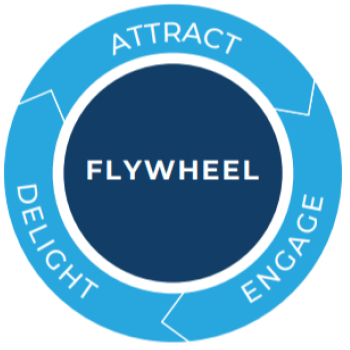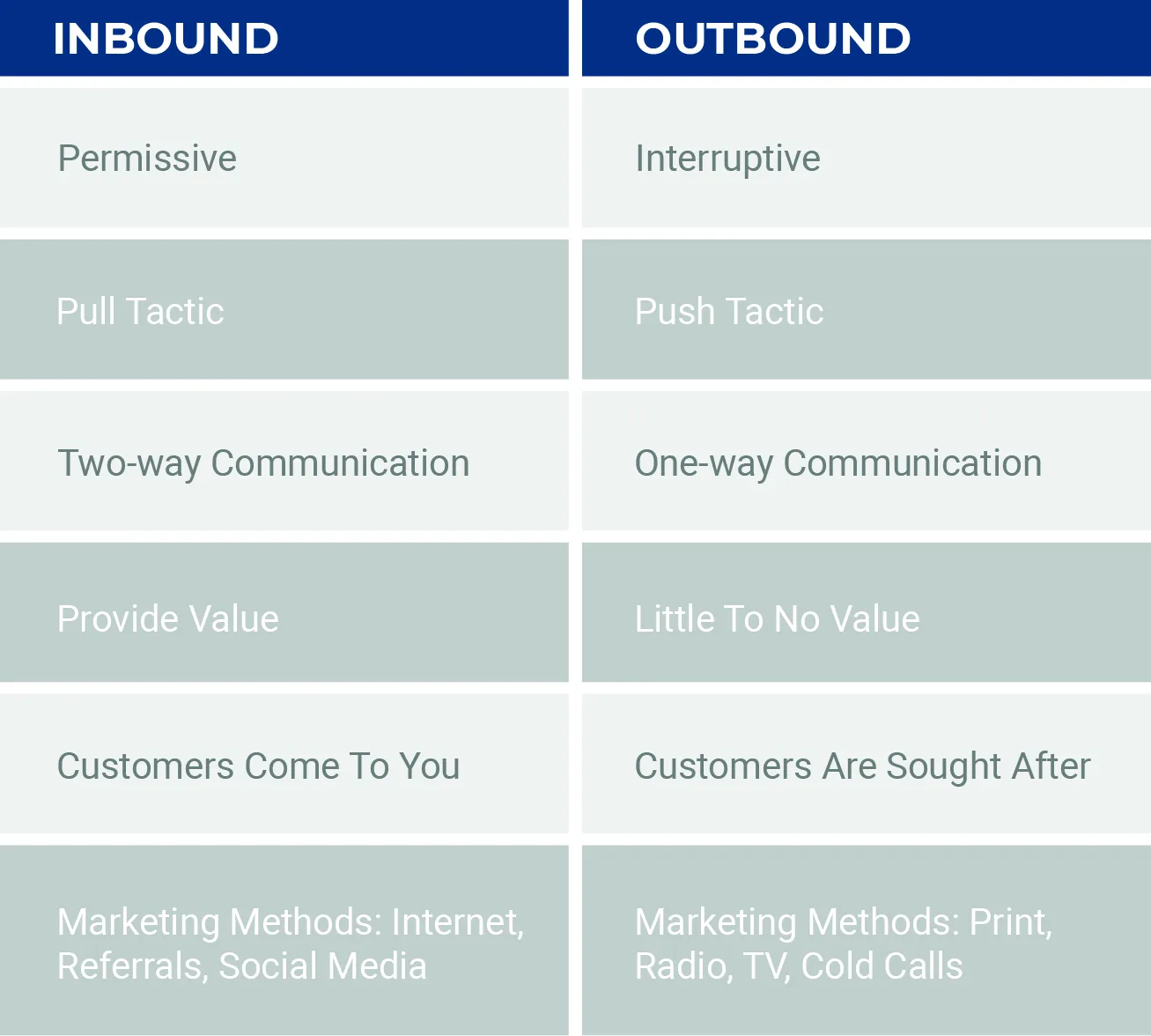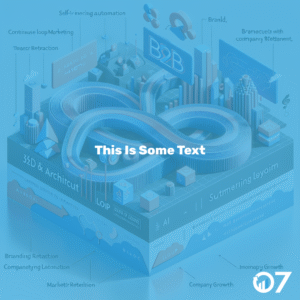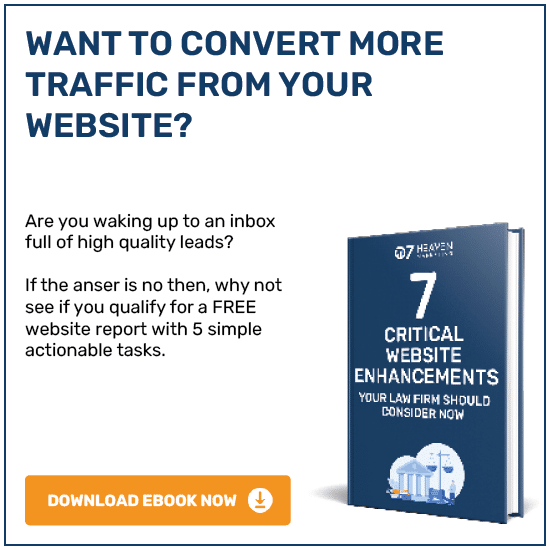Inbound vs outbound marketing, what is the best for your business? If you are within the marketing industry you are likely to have heard of both methodologies.
However, what does inbound and outbound marketing actually mean and ho do they differ? Within this blog we explore both and look to make a summary on what may be best for your business.
Outbound Marketing
What is outbound?
Outbound marketing is a form of marketing where a company directly targets an audience with an outbound, intrusive message. Outbound marketing is seen to use interruptive methods of marketing, often designed to disrupt and sell to a targeted audience.
Outbound marketing uses traditional methods of marketing including:
- Television
- Radio
- Telemarketing
- Billboards
- Event sponsorships
The basic of any outbound marketing campaign will have a strategy designed to push a business’ message and/or product to the public by featuring it throughout in their everyday life. The strategy will be targeted at getting your message in front of as many people as possible. By marketing to the masses, you increase your chances of someone converting into a customer.

Outbound Marketing Limitations
An outbound marketing campaign unfortunately has several limitations.
1) Tracking your campaigns success
Outbound marketing techniques do not allow for a marketer to effectively track and monitor metrics and KPI’s. This is no truer than in the process of tracking leads and converting leads into customers. Due to the nature of the advertising if it near enough impossible to understand where a lead was generated.
This is also true in understanding the success of an individual advertising campaign. Understanding what works better between TV and radio is difficult if you have no metrics on the amount of impressions, clicks and conversions.
2) The population is now in control
Over the last two decades with the advancement of technology and google, the way a consumer wants to buy products has changed drastically. No longer are the days when someone will react positively to an intrusive, sales focus method. An excellent example of a decline in this methodology is to consider the change in success of cold calls and door to door salesmen.
In the current times people are looking for an informative experience on their terms, often buying at a time that suits them. This type of customer experience has been produced due to the advancement of technology and the ability for a consumer to research a problem, find suitable solutions and then quickly compare potential vendors.
3) Outbound is expensive
Outbound marketing, compared to inbound marketing, is an expensive form of marketing. In an industry where profit margins are tight this can create difficulties in initial marketing budget allocation.
By the nature of being an expensive form of marketing a company will naturally be mindful with the amount of budget allocated to each campaign. It must also be considered that a company cannot directly track the ROI (return of investment) for the money they are investing. This often leads to smaller marketing strategies that are not optimise for return on conversions.

These limitations combined lend to the idea that solely using outbound marketing techniques is an outdated, ineffective form of marketing. The lack of metric tracking and cost of your campaign immediately puts a business on the back foot. How will you be able to calculate return from investment and improve on your strategy as you progress?
This coupled with the changing of how the public look to buy their products, into a more calculated approach with research and reliability means a business may need to find a new marketing strategy.
Outbound statistics
Here are some outbound statistics:
- Only 29% of people want to talk to a salesperson to learn more about a product, while 62% will consult a search engine. (Weidirt)
- 47% of buyers view at least 3 to 5 pieces of content before deciding to speak with a sales rep. (Weidirt)
- 86% of people skip commercials. (Vital)
- You have a better chance of surviving an aeroplane accident than having someone convert on a banner ad. (Vital)
Inbound Marketing
What is inbound
Inbound is the process of attracting, engaging and delighting people to help grow your business, while also providing value and building trust.
Once someone arrives at your website, your sales team can engage with them using conversational tools such as email or live chat, continuing to provide value as they learn about your business. Your customer service can then delight them and continue to do so long after they become a customer, acting as an expert on your product and on hand to assist. Creating content designed to address the needs of your ideal customers, you attract qualified prospects and form trust for your business
This is known as the flywheel, which is utilised to help grow your business faster, and more efficiently.

At each stage of the flywheel there are different ways to optimise for the customer journey. Below are the main techniques deployed in an inbound campaign.
Search engine optimization: Optimising your website to allow you to rank higher in the organic search engine results. Read our SEO blog for further information.
Content creation: Basic form of content include website pages and blog posts. Within inbound it is important to create content for each stage of the buyer’s journey. It is also important to create content that delights and helps your customers. Quality over quantity.
Social media: Utilising social platforms to promote your brand and content. They make it possible for your content to go viral and reach a lot of people.
Calls-to-action: Call-to-actions allow you to collect information on leads by using quality content to entice a visitor to share information in exchange for downloadable content.
Emails: Emails are still a highly effective tool to nurture an ongoing relationship with people who have expressed an interest in your products. Once again creating quality content is vital to make their experience as good as possible.
See our illustration below for some additional techniques that can be used:

Inbound Marketing benefits
Inbound marketing has many benefits.
- It is a fairly inexpensive form of marketing.
- Inbound targets all stages of the buyers journey meaning you reach your customers at all stages of the buying process.
- Inbound marketing is designed to attract qualified leads.
- It is excellent for branding and leaves a good impression with potential customers.
- Inbound is an effective method for all companies, no matter size or budget.
Inbound marketing statistics
- 94% of the links search users click on are organic, not paid. (eConsultancy)
- B2B companies that blog only 1-2x/month generate 70% more leads than those who don’t blog. (HubSpot)
- Companies with 51-100 Twitter followers generate 106% more traffic than those with 25 or fewer. (HubSpot)
- Nurtured leads make 47% larger purchases than non-nurtured leads. (The Annuitas Group)
So Inbound vs Outbound Marketing
So, let’s summarise the differences between inbound marketing and outbound marketing.

When deciding between inbound and outbound marketing it is important to consider the overall goals of your marketing campaign.
If you are looking to reach mass audiences on a large budget, outbound marketing may be for you.
Inbound marketing however is more suited for businesses looking for a long term, sustainable form of marketing. By creating quality content and delighting potential customers at each stage of the buying process you will create long term, returning business.
We have created a digital marketing resource page, why not check it out? It is about all things digital marketing and inbound marketing. We have listed informational blogs about inbound marketing methodology, SEO, content creation and social media management.
For further insights and guidance, we invite you to explore our blog at 07hm.co.uk/blog. Here, you’ll find a wealth of information tailored to the needs and challenges of SMEs navigating the digital landscape. Additionally, if you have specific questions or need personalised advice, don’t hesitate to reach out to us via email at info@07hm.co.uk or telephone on 01702 410663.






